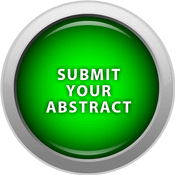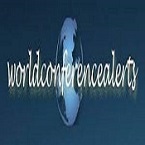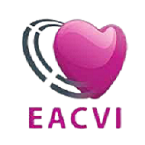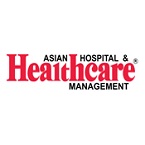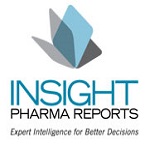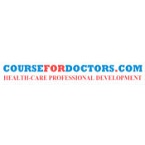Recommended Global Cardiology Webinars & Conferences
Europe & UK
Asia Pacific & Middle East
Canada
HEART SUMMIT 2023
About Conference
The Heart Summit 2023 will be held on September 14-15, 2023, in Singapore City, Singapore, and is cordially invited to all participants from across the world. This Cardiology Conference will fetch together world-class professors, scientists, Researchers and cardiologists to discuss, Emergency Medical Service, Cardiac Emergencies, Emergency and Acute Care Medicine, Emergency Nursing, Pediatric Cardiology, Cardiovascular Surgery, Electrocardiography, Cardiac, Cardiac Pharmacology, Emergency Imaging, Gynecologic/Obstetric Emergencies, Endocrine/Neurological Emergencies, Cardiovascular Surgery, Cardiovascular Surgery Clinical Cardiology, Pediatric Emergencies, Hypertension and Health Care.
HEART SUMMIT 2023 is intended to deliver broad and up-to-date education that will keep cardiology specialists on top of developments influencing the prevention, diagnosis, and treatment of cardiovascular disease. The theme of said meeting will indeed be "Modern Innovations at the Global Heart Summit."
HEART SUMMIT 2023 aims to provide an opportunity for a large number of medical professionals, such as executives, chiefs, faculty members, professors, scientists, researchers, cardiologists, founders and employees of related companies, members of associations and organizations, laboratory members, and young researchers working in the field of cardiology and heart therapies, to share knowledge, expertise, and unparalleled networking opportunities. This cardiology conference primarily focuses on raising knowledge about the issues in these domains, as well as how to prevent and manage cardiac imaging, cardiology, and cardiac nursing techniques.
Every year, Conference Series LLC Ltd organizes 300+ conferences, 500+ workshops, and 200+ symposiums on general practice, pharmaceutics, healthcare, cardiac diagnosis workshops, cardiology conferences, heart meetings, and science and technology in the U.S., Europe in general, Asia, as well as the Middle East, Australia, and the U.K., with the assistance of another 1000 scientific societies. Publishes 500 open access journals with editorial boards comprised of over 30000 famous personalities and renowned scientists.
Why to attend??
Meet the target market, which includes members from all over the world who are eager to learn about cardiology procedures. This is the ideal opportunity to reach out to the world's largest gathering of people. At this two-day event, you can give presentations, distribute and refresh your knowledge about the current state of nuclear cardiology and echocardiography techniques, and gain name recognition. The main highlights of cardiology conferences are world-renowned speakers, the most recent research, cutting-edge treatment approaches, and innovative updates in nuclear cardiology.
Target Audience:
Our organization would be privileged to welcome the Directors of Cardiology and related programmer or associations Cardiology and Related Department Heads, Deans, and Scientists and researchers Cardiology Associations and Organizations Laboratory members and students working in the field of cardiology
Sessions and tracks
Sessions and tracks
Track 1: Clinical Cardiology
Clinical cardiology includes studies pertaining to cardiac diseases, cardiovascular heart disease, congenital heart diseases, coronary artery disease, and their epidemiology and pathophysiology in the heart. Therapeutic procedures involving diagnosis and management of cardiac diseases like cardiovascular devices, cardiac regeneration, cardiac medicine, electrophysiology, cardiac surgery, and identification of risk factors for cardiovascular diseases.
Track 2: Emergency Medical Service
Emergency medical services provide some of the most immediate services, like transport, ambulance services, medical care, and many more, to those patients who need urgent medical attention and treatment. Although ambulances are known as the primary vehicles for delivering EMS, in some places, cars, motorcycles, and boats are also used.
Track 3: Cardiac Emergencies
Cardiac emergencies are a chronic condition that can trigger symptoms such as shortness of breath, fluid retention, rapid or irregular heartbeats, and more. As life-threatening disorders, they should be recognized and treated immediately to minimize the risk of morbidity and mortality.
Track 4: Emergency and acute care Medicine
In the present era, emergency medicine is the primary focus of research in medicinal science. It is a medical specialty treatment for patients with injuries or illnesses that require immediate medical attention in the acute phase. Generally, urgent care is served by nurses, physician assistants, and medical assistants.
Track 5: Pediatric Emergencies
A pediatric emergency deals with children and teens that are acutely ill or injured. A pediatric emergency physician is trained to take care of problems that require immediate medical help. These problems are often serious and may be life-threatening for children and teens.
Track 6: Emergency Nursing
An emergency nurse is one who is assigned to patients as they arrive in the emergency department. As a result, the emergency nurse must be sure-handed, active, and quick, perform a proper physical examination, and recognize dangerous conditions as soon as possible.
Track 7: Pediatric Cardiology
Pediatric cardiology is for diagnosing congenital heart defects and performing diagnostic procedures such as electrophysiology studies, echocardiograms, and cardiac catheterization. Different types of inflammatory heart disease include myocarditis. Kawasaki’s disease is a rare childhood disease that affects blood vessels. Pericardial diseases may be clinically classified as acute pericarditis, pericardial effusion, and cardiac tamponed and constrictive pericarditis. Infectious endocarditis is a form of endocarditis. It is an inflammation of the inner tissues of the heart. These are the major inflammatory defects in a baby's heart.
Track 8: Cardiovascular Surgery
The main role of cardiovascular surgeons is to operate on the heart and blood vessels to repair damage caused by diseases or disorders of the cardiovascular system. Heart valve repair and replacement, heart defect repair, coronary artery bypass, aneurysm repair, Tran’s myocardial laser revascularization, and heart transplantation are performed by cardiovascular surgeons.
Track 9: Hypertension and Health care
High blood pressure is a serious cardiac disease. The pressure of the blood being pumped through the arteries is higher during hypertension. It often has no warning signs or symptoms. Over time, the constant pressure overload causes accumulating damage that eventually becomes more than the circulatory system can handle, often leading to serious health problems. Treating high blood pressure takes a multi-pronged approach, including medication, exercise, and diet changes.
Track 10: Electrocardiography
Electrocardiography is the process of recording the electrical activity of the heart over a period of time using electrodes placed on the skin. These electrodes detect the tiny electrical changes on the skin that arise from the heart muscle's electrophysiological pattern of depolarizing and repolarizing during each heartbeat. This is a type of technique that is very commonly performed to detect any cardiac problems.
Track 11: Cardiac Imaging Techniques
A physician performs cardiac imaging to diagnose a heart condition. Medical specialty professional organizations discourage the use of routine cardiac imaging during pre-operative assessment for patients about to undergo low- or mid-risk non-cardiac surgery because the procedure carries risks and is unlikely to result in a change in the patient's management. Stress cardiac imaging is discouraged in the evaluation of patients without cardiac symptoms or in routine follow-ups.
Track 12: Cardiac Pharmacology
Cardiovascular pharmacology is one of the important fields dealing with the treatment of heart disease. Cardiac medications are used to treat the cardiac, circulatory, and vascular systems. Various cardiovascular agents are available to treat various cardiovascular conditions. Sodium, potassium, calcium channel blockers, ACE inhibitors, and cardiac biomarkers Three new drugs were introduced in 2015. There are many types of cardiovascular drugs on the market that include cardiac glycosides, anticoagulants, antiarrhythmic agents, anti-angina agents, and antihypertensive agents.
Track 13: Emergency Imaging
In the past few years, radiologic imaging has brought tremendous advancements in the fields of emergency medicine and surgery. In the present era, emergency radiology is one of the important departments, and the presence of radiologists on site in major accidents is crucial. Emergency departments are critical to the smooth operation of the service.
Track 14: Gynecologic/Obstetric Emergencies
Gynecologic and obstetric emergencies mostly occur in women during reproductive age, but they mostly affect women of all ages. The most common emergencies were prolonged labor, postpartum hemorrhage, severe pregnancy-induced hypertension, and fatal distress. Prevention or effective management of obstetric emergencies will help to reduce maternal and perinatal mortality in our environment.
Track 15: Endocrine/Neurological Emergencies
Endocrine emergencies represent a group of potentially life-threatening conditions that are frequently overlooked, resulting in delays in both diagnosis and treatment—factors that further contribute to their already high associated mortality rates. Delay in the treatment of endocrine disorders may result in the patient's death. If neurological emergencies are not diagnosed and treated quickly, they may cause catastrophic results with high rates of long-term disability and death. Prompt recognition is an important skill. Emergency department management of patients with neurological emergencies has witnessed a significant improvement in the treatment of stroke, traumatic brain injury, and subarachnoid hemorrhage and continues to evolve at a rapid pace.
Track 16: Cardiac Nursing
Cardiac nursing has a place in working with patients who are suffering from various states of the cardiovascular framework. Under the supervision of a cardiologist, a cardiac nurse caretaker cures conditions like unsteady angina, congestive heart failure, myocardial dead tissue cardiomyopathy, coronary course sickness, and heart dysrhythmia. Cardiac medical nurses are prepared for a variety of practice settings, including working in operating rooms, cardiovascular recovery centers, cardiovascular consideration centers, cardiovascular consideration centres clinical exploration, including coronary consideration units, heart catheterization, serious patient consideration units, cardiovascular surgery wards, cardiovascular concentrated consideration units, and cardiovascular restorative wards.
Track 17: Nutrition, Diet & Exercise
One will notice immediate changes in energy levels if they pair regular exercise with a well-balanced diet. More importantly, consistently eating well and exercising will improve your health and extend your lifespan. The guidelines for better health are to engage in at least 150 minutes of aerobic exercise and full-body strength training sessions each week and eat a nutritionally diverse diet low in fat and sodium but high in fiber. One should seek the help of a health care provider to devise a more detailed diet and fitness plan.
Track 18: Cardiac and Cardiovascular Research
The Cardiology Meeting supports awareness of the treatment of risk factors for cardiac disorders. The most comprehensive provider of cardiovascular services for the prevention, detection, treatment, and treatment of cardiovascular diseases this annual cardiology meeting is a platform for postgraduate education and scientific work in the fields of cardiology, angiology, hypertension, and cardiac and vascular surgery, reduces clinical events and premature death in people at risk of cardiovascular disease. Cardiovascular disease is treatable with initial treatment primarily focused on nutrition and lifestyle interventions. The medical meeting focuses on the treatment of diseases and new theories of diagnosis of blood vessels and the vascular system, or heart.
Track 19: Heart Devices
Heart devices are electronic devices that help circulate a heart that is used partially or completely to replace the function of a failing heart. The development of these wireless heart monitors marks a new era in medicine, and the transition from healthcare at population levels to personalized medicine where appropriate patients are equipped with advanced biosensors that in turn have their data processed by sophisticated prediction algorithms will happen. Pacemakers, defibrillators, and biosensors are cardiac devices used to treat heart disease.
Track 20: Diabetes, Obesity & Stroke
Obesity increases the risk of heart disease and stroke. But it damages more than just the heart and blood system. It is also the major cause of bile stones, osteoarthritis, and respiratory problems. Obesity closely interferes with many health conditions that underlie cardiovascular disease, including high blood pressure, diabetes, and abnormal blood cholesterol. This is a serious condition in which your heart is unable to pump enough blood to meet your body's needs. After diabetes, a person is at increased risk of heart disease and stroke. One can reduce the risk by maintaining blood glucose levels (also called blood sugar), blood pressure, and blood cholesterol levels close to the recommended target values—levels suggested by diabetes professionals for good health. Stroke and coronary heart disease can be caused by the same problem: atherosclerosis.
Market Analysis
According to research and consultancy organisation Global Data, the heart summit market is expected to rise from from $3.2 billion in 2015 to $11.8 billion by 2025, reflecting a compound annual growth fee of 13.7%. According to the company's most recent report, Pharma Point: Heart Summit - Global Drug Forecast and Market Analysis to 2025, the key drivers of this significant growth, which will occur across the seven key markets of the United States, France, Germany, Italy, Spain, the United Kingdom, and Japan, will be the launch of Novartis' first-in-class drug, Entresto, and several acute coronary heart summit add-on therapies, as well as an increase in the global incidence of persistent coronary heart summit.
"Novartis' Entresto is a first-in-class Angiotensin Receptor-Neprilysin inhibitor (ARNi)," says Elizabeth Hamson, Ph.D., Global Data's Analyst covering Cardiovascular and Metabolic Disorders.
The medicine has increased the bar for effective long-term coronary heart disease treatment, however acceptance has been modest. Entresto has struggled to break into the chronic heart summit market, achieving abysmal earnings in the United States since its debut in July 2015.
Excessive cost and the general unwillingness of cardiologists and clinicians to pursue novel treatment alternatives have been identified as the primary barriers to this drug's acceptance by Global Data. Despite this, it is expected that Entresto will begin to dominate the global coronary heart summit space, particularly after its label expansion to heart summit with preserved ejection fraction, which is expected in 2020, making it the strongest driver of market growth."
This presentation provides an assessment of the heart summit space in the seven major countries of the United States, France, Germany, Italy, Spain, the United Kingdom, and Japan, as well as annualized market figures from 2015 and projections to 2025. Strategic competitor evaluation, market characterization, unmet needs, clinical trial mapping, and implications for the continuous and acute coronary heart summit treatments sectors are among the key topics covered. It was built with information and facts obtained from proprietary databases, primary and secondary research, and in-house review performed by Global Data's team of enterprise professionals.
In 2021, the worldwide total artificial heart market was valued at roughly US$ 191.1Mn, representing a 13.8% year-on-year rise. The total artificial heart market is expected to grow at a strong 12.2% CAGR by 2032. "The increase in cardiac illnesses among the population, as well as the development of healthcare infrastructure in emerging nations, is expected to drive the market for complete artificial hearts."
A whole artificial heart is a pump that is surgically implanted when undergoing cardiac surgery. A fully artificial heart is intended to circulate blood and exchange cardiac ventricles. Blood is pumped from the heart's ventricles to the lungs and other organs. Machines outside the body control the implanted pumps, which help blood flow to and from the heart.
The entire artificial heart operates by replacing the heart's bottom chambers, known as the ventricles. The entire artificial heart is linked to a power source outside of the human body through tubes. The entire artificial heart then pumps blood to the lungs and the rest of the body via the heart's main artery.
The entire artificial heart comprises of four mechanical valves that function similarly to the genuine valves of the heart and play an important role in maintaining blood flow. These valves link the arteries, the atrium, the aorta, and the pulmonary artery to the whole mechanical heart.
Because it is linked to the right and left atria of the heart, it duplicates the functioning of a normal heart, giving circulatory support and restoring normal blood flow throughout the body. The entire artificial heart is then triggered.
What are the main factors driving the Total Artificial Heart Market?
The increasing frequency of cardiac illnesses, together with improving healthcare awareness among the public, is the key driver driving overall artificial heart market growth. Furthermore, increased incidence of heart failure and an ageing population are boosting market revenue growth.
Aside from these causes, the entire artificial heart market is expected to develop due to an increase in the number of hospitals and specialist centers, rising healthcare spending, and the adoption of unhealthy lifestyle behaviors. Furthermore, the development of different programmers for raising public awareness and rising government initiatives for the treatment of cardiac illnesses are expected to boost the entire artificial heart market.
Which region has the highest growth potential in the global artificial heart market?
Due to the establishment of a large number of research centers and well-developed healthcare infrastructure in this region, North America's total artificial heart market is expected to dominate the global market in projected years. Following North America, Europe is also expected to hold a lucrative share in the total artificial heart market due to the rising prevalence of cardiac disorders. Due to an increase in the number of cardiac procedures, the market in East and South Asian nations such as China and India is likely to develop at a sustainable rate in the near future.
Importance & Scope:
- Follow-up sessions: learn how to utilize and understand the most recent Guidelines for the diagnosis and management of acute and chronic heart failure.
- Presentation of the most current advancements in the field
- Attend more than 120 scientific seminars to learn from experts.
- Make contacts in your field among the projected 6'000 delegates.
- Network with other researchers: we often get over 150 abstracts and clinical cases.
- Interact with the 300 expert faculty members from across the world and ask any questions you This continuing medical education programmer is designed to meet the educational needs of cardiologists, cardiothoracic surgeons, family practice, internal medicine, hospitalists, advanced practice nurses, registered nurses, physician assistants, pharmacists, cardiology and cardiac surgery fellows and residents in training involved in the diagnosis and management of adult patients with cardiovascular disease.
- Related businesses/industries:
- Sanofi
- Bayer Corporation
- Bristol-Myers Squibb Corporation
- Daiichi Sankyo Corporation
- J&J
Related Associations and Societies:
- The American Society of Preventive Cardiology (ASPC)
- Nuclear Cardiology Society of America
- American heart Association (AHA)
- American heart Association
- Cardiovascular Angiography and Interventions Society
- Arizona Echocardiography Society
- Cardiological Society of Brazil
- World Cardiology Conferences 2023
- American Heart Summit Society
- Canadian Cardiovascular Prevention and Rehabilitation Association
- Cardiology Partners of the Elsevier Society
- Preventive Cardiology Society of America
- Echocardiography Society of America
- 2023 World Heart Congress
- Hypertension Society of America
- Hypertension Society of Brazil
- Canadian Heart Association
- Cardiological Society of Argentina
- Canadian Interventional Cardiology Society
- Society for Congenital Cardiac Anesthesia
- Cardiology Congress 2023
- The American Association of Cardiovascular and Pulmonary Rehabilitation (AACPR);
- Cardiovascular Congress 2023
- Society of Vascular and Endovascular Surgery
To Collaborate Scientific Professionals around the World
Conference Date September 14-15, 2023
For Sponsors & Exhibitors
Speaker Opportunity
Useful Links
Past Conference Report
Supported By
All accepted abstracts will be published in respective Conference Series International Journals.
Abstracts will be provided with Digital Object Identifier by
